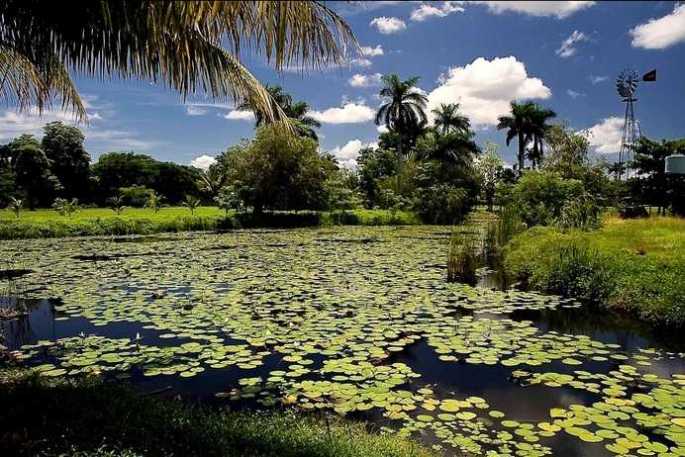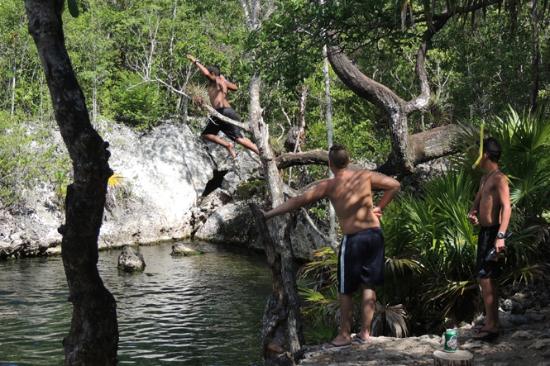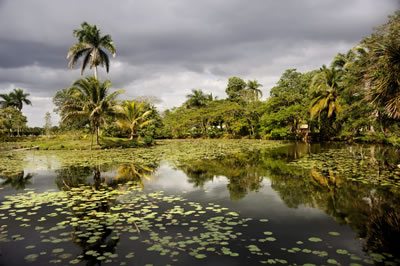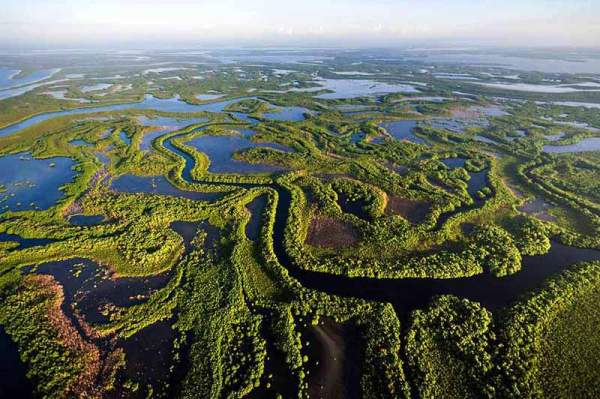 THE CIÉNAGA DE ZAPATA, CUBA, THE GREATEST WETLAND OF THE CARIBBEAN. PHOTOS.
THE CIÉNAGA DE ZAPATA, CUBA, THE GREATEST WETLAND OF THE CARIBBEAN. PHOTOS.
La Ciénaga de Zapata, is located in the Zapata peninsula, in the southern province of Matanzas, Cuba. It is located less than 150 kilometers (93 miles) southeast of Havana. Ciénaga de Zapata also represents a municipality, the largest in Cuba with 4,162 km2.
.
Within the Zapata Swamp there are more than 900 species of native plants, 175 species of birds, 31 species of reptiles and more than 1000 species of invertebrates. Some of the most notable are local endemisms to Cuba; for birds, it includes Zapata’s wren, Zapata’s rail and Zapata’s sparrow.
The Zapata Swamp is also a particular habitat of the bee hummingbird, the smallest bird species on the planet. The Zapata Swamp is also visited by 65 species of birds during their migration pattern from North America through the Caribbean to South America. Zapata is also known for the local endemic Cuban crocodile (Crocodylus rhombifer) that is restricted to the Zapata marsh and is being reintroduced into the nearby Lanier marsh on Isla de la Juventud (Spanish: Isla de la Juventud).
Within the Zapata reservoir there are numerous areas designated for the preservation of the environment, such as the Zapata Swamp Nature Reserve and the Las Salinas wildlife sanctuary, which is part of the Ciénaga de Zapata Biosphere Reserve (IUCN category) , which in total has more than 6,000 km² and is the largest protected area, not only in Cuba, but also in the Caribbean. swamp is not only known for its size, but also for being the best conserved wetland of all the Antilles, designated as “Wetland of International Importance” by the Ramsar Convention on Wetlands in 1971. In mid-2001, a site was declared Ramsar to 4,520 additional km² in mid-2001.
To say Ciénaga de Zapata is to say nature, that is to say virgin forests, vegetation of marshes and swamps, centennial mangroves, beautiful beaches without any pollution, nature tourism.
Access to the region is through a road that connects with the National Highway at the height of Jagüey Grande, at Km 142. A visit to this region begins at its northern end after leaving behind the National Highway. There they are:
– Boca de Guamá: 18 Km away from the National Highway, there are the Cocodrilos breeding places, created in 1962 with the objective of protecting the species, you can take pictures of specimens of different sizes.
– Laguna del Tesoro: accessed by boat from Boca de Guamá through a canal surrounded by thick, green vegetation. The Laguna del Tesoro is a beautiful natural lake of 9.0 km2 of area and 4 m of average depth, surrounded by virgin vegetation and where trout abounds.
– Playa Larga: located 12 km south of La Boca, at the inner end of the Bay of Pigs, Playa Larga offers the typical attractions of a beautiful beach, one of the best on the coast on the Caribbean Sea on the island and where also a magnificent coral reef with there are beautiful sea beds.
– Playa Girón: located at the east entrance of the Bay of Pigs and 34 km SE of Playa Larga, Playa Girón remembers with its name the pirate of French origin Gilbert Girón who took refuge in the area back in the seventeenth century.
– La Cueva de los Peces: located between Playa Larga and Playa Girón, it is a kind of cenote with crystalline and deep waters populated by fish. Diving in the Ciénaga de Zapata diving is largely linked to ancient systems of caves in the area whose roofs sank.
 LA CIÉNAGA DE ZAPATA, CUBA, EL MAYOR HUMEDAL DEL CARIBE. FOTOS.
LA CIÉNAGA DE ZAPATA, CUBA, EL MAYOR HUMEDAL DEL CARIBE. FOTOS.
La Ciénaga de Zapata, se encuentra en la península de Zapata, en la provincia sureña de Matanzas, Cuba. Se encuentra a menos de 150 kilómetros (93 millas) al sureste de La Habana. Ciénaga de Zapata representa también un municipio, el más grande de Cuba con 4,162 km2.
.
Dentro de la ciénaga de Zapata hay más de 900 especies de plantas autóctonas, 175 especies de aves, 31 especies de reptiles y más de 1000 especies de invertebrados. Algunos de los más notables son endemismos locales a Cuba; para las aves, incluye el wren de Zapata, el riel de Zapata y el gorrión de Zapata.
La Ciénaga de Zapata también es un hábitat particular del colibrí abeja, la especie de ave más pequeña del planeta. La Ciénaga de Zapata también es visitado por 65 especies de aves durante su patrón de migración desde América del Norte a través del Caribe hacia América del Sur. Zapata también es conocido por el cocodrilo cubano endémico local (Crocodylus rhombifer) que está restringido al pantano de Zapata y se está reintroduciendo en el cercano pantano de Lanier en la Isla de la Juventud (español: Isla de la Juventud).
Dentro del pantano de Zapata hay numerosas áreas designadas para la preservación del medio ambiente, como la Reserva Natural de la Ciénaga de Zapata y el santuario de vida silvestre Las Salinas, que forma parte de la Reserva de la Biosfera Ciénaga de Zapata (categoría IUCN), que en total tiene más de 6,000 km² y es la más grande Área protegida, no solo en Cuba, sino también en el Caribe. pantano no solo es conocido por su tamaño, sino también por ser el humedal mejor conservado de todas las Antillas, designado como “Humedal de Importancia Internacional” por la Convención de Ramsar sobre los Humedales en 1971. A mediados de 2001, se declaró un sitio Ramsar a 4.520 km² adicionales a mediados de 2001.
Decir Ciénaga de Zapata es decir naturaleza, es decir bosques vírgenes, vegetación de pantanos y ciénagas, manglares centenarios, playas hermosas sin contaminación alguna, turismo de naturaleza.
El acceso a la región es a través de una carretera que entronca con la Autopista Nacional a la altura de Jagüey Grande, en el Km 142. Una visita a esta región comienza en su extremo Norte después de dejar atrás la Autopista Nacional. Allí se encuentran:
– Boca de Guamá: a 18 Km de la Autopista Nacional están los criaderos de Cocodrilos, creado en el año 1962 con el objetivo de proteger la especie, se pueden tomar fotos de ejemplares de diversos tamaños.

– Laguna del Tesoro: se accede en barco desde Boca de Guamá a través de un canal rodeado de espesa y verde vegetación. La Laguna del Tesoro es un bello lago natural de 9.0 Km2 de área y 4 m de profundidad media, rodeado de vegetación virgen y donde abunda la trucha.
– Playa Larga: situada a 12 Km al Sur de La Boca, en el extremo interior de Bahía de Cochinos, Playa Larga ofrece los atractivos típicos de un hermosa playa, una de las mejores de la costa sobre el Mar Caribe en la isla y donde también una magnífica barrera coralina con hay bellos fondos marinos.
– Playa Girón: situada en la entrada Este de Bahía de Cochinos y a 34 Km al SE de Playa Larga, Playa Girón recuerda con su nombre al pirata de origen francés Gilbert Girón que se refugió en la zona allá por el siglo XVII.
– La Cueva de los Peces: situada entre Playa Larga y Playa Girón, es una especie de cenote con aguas cristalinas y profundas pobladas de peces. El buceo en la Ciénaga de Zapata en gran parte el buceo está vinculado con antiguos sistemas de cavernas de la zona cuyos techos se hundieron.
Agencies/Cuba Natural/Various/Internet Photos/ YouTube/ Arnoldo Varona/ TheCubanHistory.com
THE CUBAN HISTORY, HOLLYWOOD.






